You’ve spent countless hours writing what feels like a killer blog post, full of valuable insights, yet it never sees the light of day in Google searches. For any small business owner or marketer, that sting is real. Luckily, clever keyword placement can flip the script.
In 2025, search engines care less about exact matches and more about real meaning, so putting keywords in the right place now decides if you get found online.
This article reveals exactly where to place your keywords, helping your target audience find your blog posts more easily in search results. It explains their impact on today’s AI-driven search landscape and provides actionable steps to increase your visibility right away. Whether your audience is local in Dhaka or spread across the globe, mastering this skill is crucial for converting visitors into loyal readers and customers.
What is Keyword Placement? (And Why It’s Not Just Stuffing)
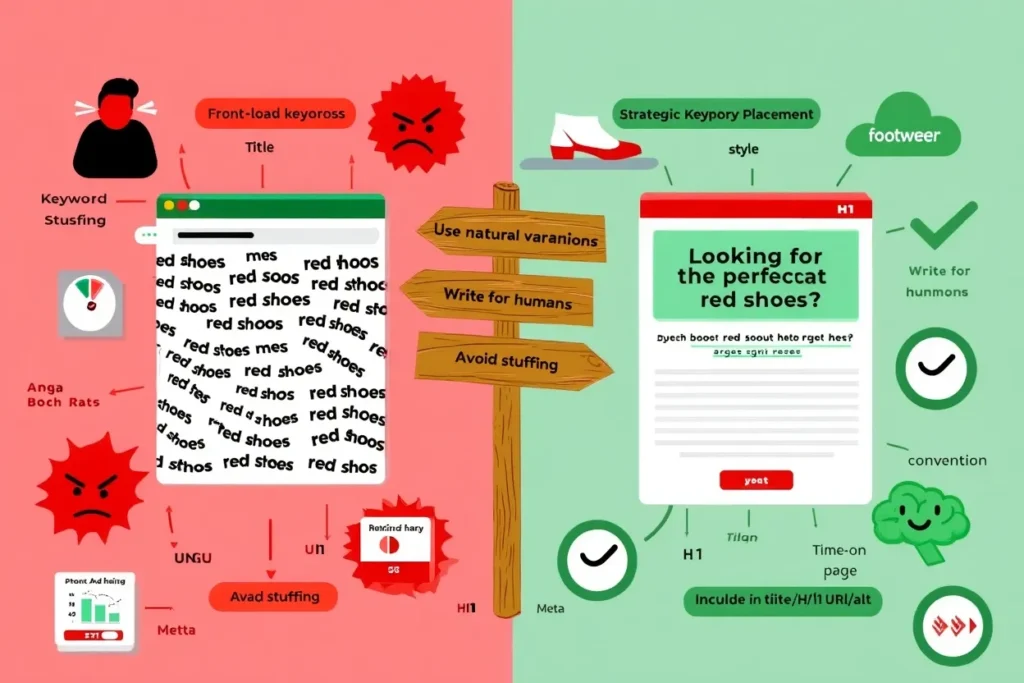
Let’s get one thing straight: stuffing a keyword into every line is ancient history, and good riddance. Modern placement is about weaving key terms naturally into your copy so both readers and search engines instantly understand the topic. Think of it this way: keywords work like subtle signposts, guiding visitors through the content while signaling Google why it deserves attention.
The Old Way vs. The Smart Way
Years ago, marketers crammed awkward phrases like “Chicago pizza best” into every other line and called it SEO. Google soon cracked down, and those pages vanished from the rankings.
Today, the strategy has flipped. Instead of squeezing keywords into every sentence, you need to align with search engines that understand context, synonyms, and user intent. Think collaboration, not manipulation.
A quick comparison makes it clear:
| 🚫 Don’t Do This (Keyword Stuffing) | ✅ Do This Instead (Strategic Placement) |
|---|---|
| “We sell the best red shoes. Our red shoes are amazing, and everyone loves them. These red shoes come in many sizes of red shoes…” | “Looking for the perfect red shoes? Our comprehensive guide helps you choose footwear that combines style, comfort, and quality for any occasion.” |
| Reads like a broken record | Flows like natural conversation |
| Written for robots | Written for actual humans |
| Same phrase on repeat | Natural variations throughout |
| Makes visitors hit the back button | Keeps people reading |
There’s no magic number of keyword mentions. Some pages rank with a single reference; others use a few more. Relevance and readability, not repetition, make the difference.
Google now asks a straightforward question: Does this page genuinely solve the searcher’s problem? If the answer is yes, the algorithm can spot it through context and quality signals.
Bottom line: write for people. Provide real answers, weave keywords in naturally, and let helpful content do the heavy lifting. Your readers—and the rankings—will thank you.
High-Impact Zones: Placing Keywords Where They Matter Most

Picture your webpage as a city. Some districts charge higher rent because of foot traffic, and the same logic applies to on-page SEO. Certain spots carry far more weight than others, so knowing where to drop a keyword can lift your content from invisible to irresistible.
Before diving in, remember: clever placement is not a box-checking exercise. It’s about steering both readers and search engines straight to your main idea.
Title Tag: The Click Magnet
Your title tag is the billboard that convinces searchers to stop scrolling. Google leans on it to judge topic relevance, and users rely on it to decide whether to click. Lead with your primary keyword if it feels natural:
“Keyword Placement Guide: 7 Proven Tactics” outperforms “7 Tactics for Better Keyword Placement.”
Stick to roughly 50–60 characters, or you risk the dreaded ellipsis.
Meta Description: The Mini Trailer
Google says meta descriptions do not boost rank directly, but a snappy snippet can raise click-through rates—and higher engagement signals help rankings over time. Keep it to 150–160 characters, weave in the keyword smoothly, and promise a clear benefit. Think of it as ad copy that earns you free traffic.
H1 Tag: Your Main Headline
The H1 is the handshake that confirms what the page delivers. Align it with the title tag to prevent mixed signals. Occasionally, Google swaps your title for the H1 in search results, so make it count.
Subheadings (H2, H3): Road Signs for Skimmers
Most visitors skim. Descriptive subheads guide them to the right section and show Google the flow of ideas. Use keyword variations naturally:
• “Strategic Keyword Placement Explained”
• “Where Keywords Have the Most Impact”
• “Mistakes That Sink Rankings”
Each heading stays on topic without sounding forced.
First 100 Words: Proof of Relevance
Readers decide within seconds whether to stick around. Search engines also give extra weight to your opening lines. Address the user’s problem right away, and include your main keyword where it fits naturally.
Image Alt Text and File Names: The Overlooked Boost
Search engines cannot “see” images, so filenames and alt text do the talking. Swap “IMG_5847” for “keyword-placement-infographic” and describe the picture accurately in the alt text. A well-optimized graphic can rank in image search—and send visitors through an extra door.
URL Slug: The Friendly Address
Clean, readable URLs build trust and reinforce relevance. Drop filler words and keep it short:
yoursite.com/keyword-placement beats yoursite.com/the-complete-guide-to-understanding-keyword-placement-for-seo every time.
Bottom line: Master these high-impact zones, and your content will earn clicks, stay visible, and gain favor with modern search algorithms—no outdated tricks required.
Keyword Placement in the AI Search Era
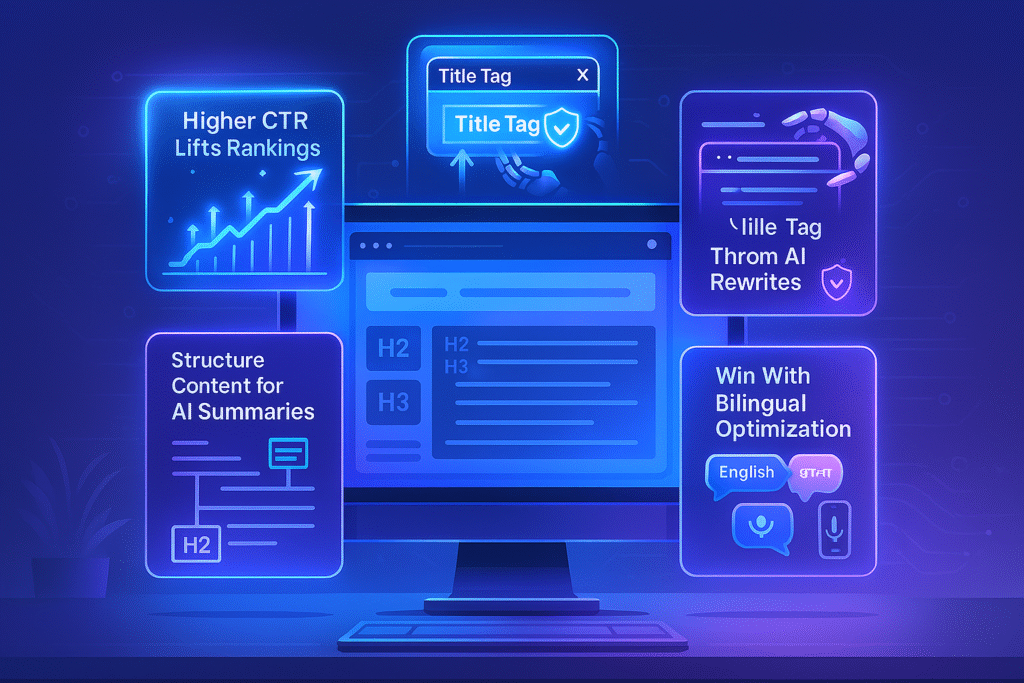
Search keeps evolving at breakneck speed, and by 2025, keyword placement will have become a core lever in AI-driven results. At SEO Services BD, we watch both Bangladeshi brands and global retailers win when they adapt to four new realities: higher click-through rates (CTR) boost rank, Google rewrites vague titles, AI summaries favor clear structure, and bilingual searches dominate the local scene.
1. Higher CTR Lifts Rankings
When a primary keyword appears in a value-packed title and meta snippet, more people click. That engagement, more extended visits, and lower bounce rates give Google the positive signals it loves, nudging the page higher. Backlinko’s 2025 report even tags organic CTR as a frontline ranking factor, while AI answer boxes now steal roughly 18 % of clicks from top listings. In short, thoughtful phrasing powers a feedback loop of visibility and credibility.
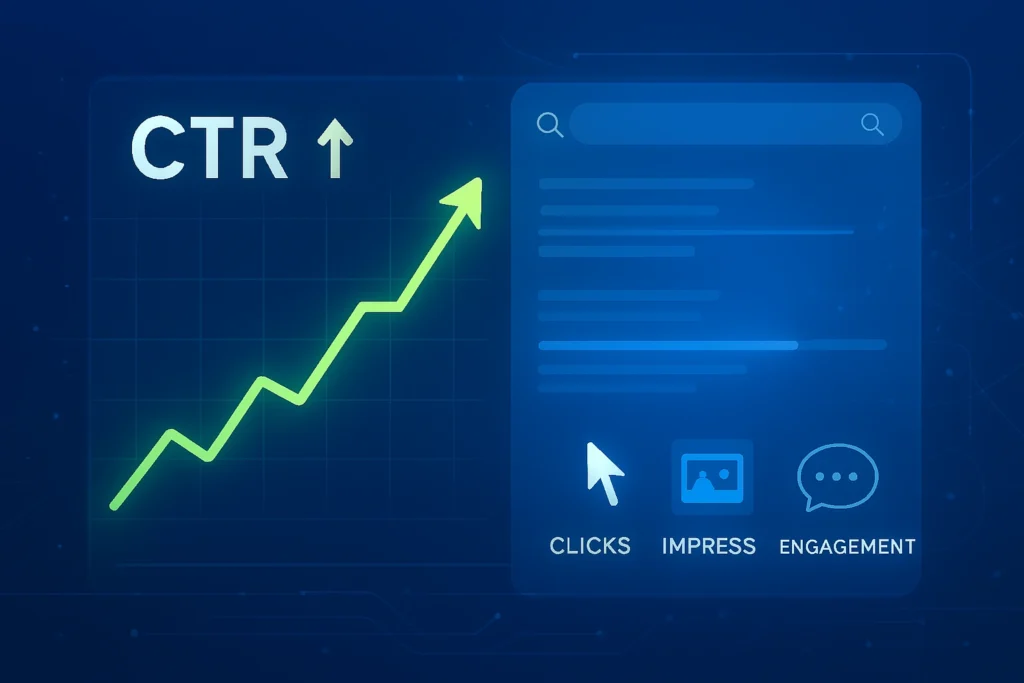
2. Shield Titles From Google’s AI Rewrites
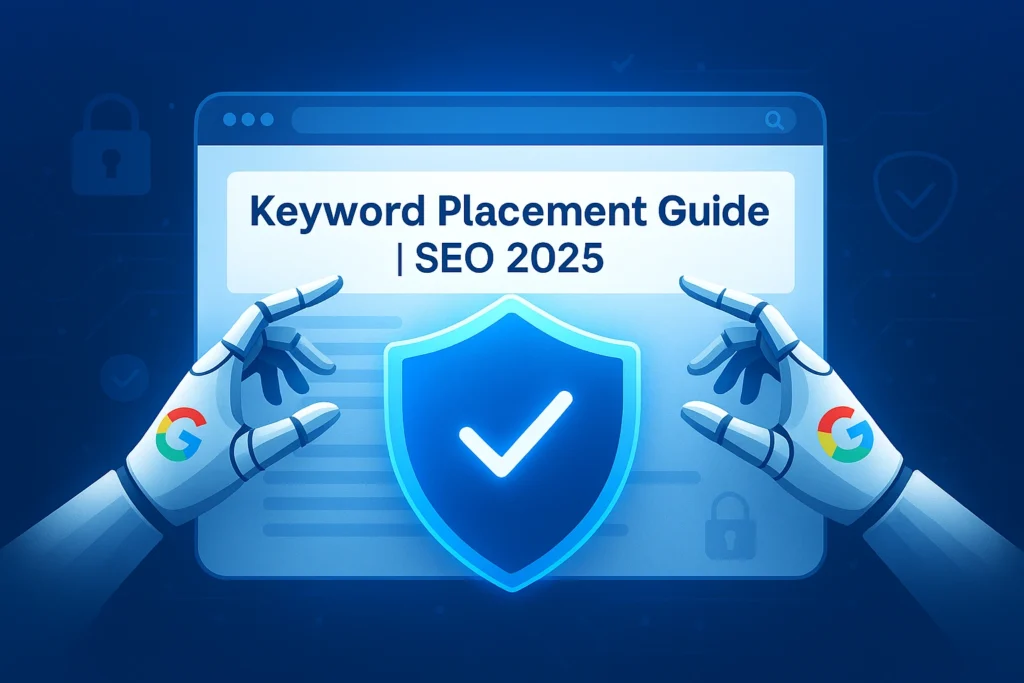
So far this year, Google has altered about three out of four title tags, punishing keyword-stuffed or off-brand lines the hardest. Concise, user-first headlines that start with the main keyword are edited roughly 25% less often. Staying under 55–60 characters and mirroring everyday language keeps your message intact—and your clicks steady.
3. Structure Content for AI Summaries
ChatGPT, Gemini, and other assistants highlight pages with logical flow. Descriptive H2/H3 tags, brief wrap-ups, and schema-marked FAQs make it easy for these tools to cite you accurately. Google’s 2025 developer guide urges creators to bake obvious takeaways into each section, so a clear layout now matters as much as the keyword itself.

4. Win With Bilingual Optimization
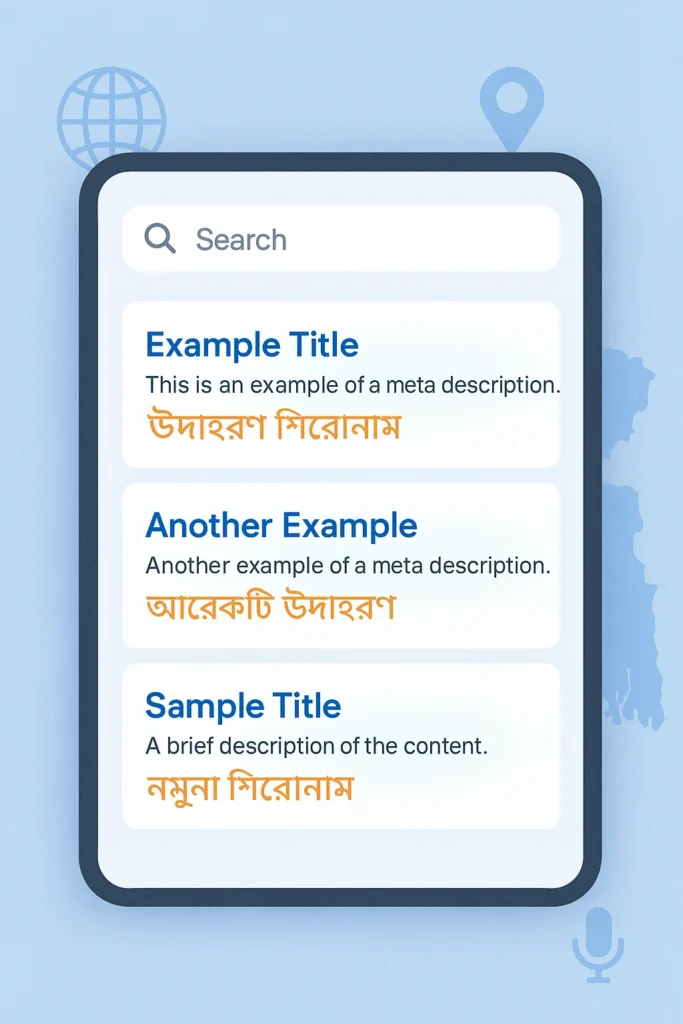
Bangladeshi users often mix English and Bangla, especially on mobile or voice search. Pairing both languages in titles, meta descriptions, and key headings captures traffic competitors miss.
Google Keyword Planner now maps Bangla variants—such as “keyword placement Dhaka-te”—to English equivalents, and recent data shows 70 % of regional queries use this hybrid style. Brands that embrace it reach deeper locally without losing global appeal.
Turning AI Challenges Into Growth
Blend strategic keywords with reader-focused titles, resilient structure, and bilingual nuance. The same AI forces that complicate rankings can fuel growth when you meet them on their own terms—a roadmap we follow daily at SEO Services BD.
From Theory to Practice: A Keyword Placement Walkthrough
You’ve learned the rationale for keyword placement and identified the key spots. Now comes the exciting part: seeing how this actually works in real situations.
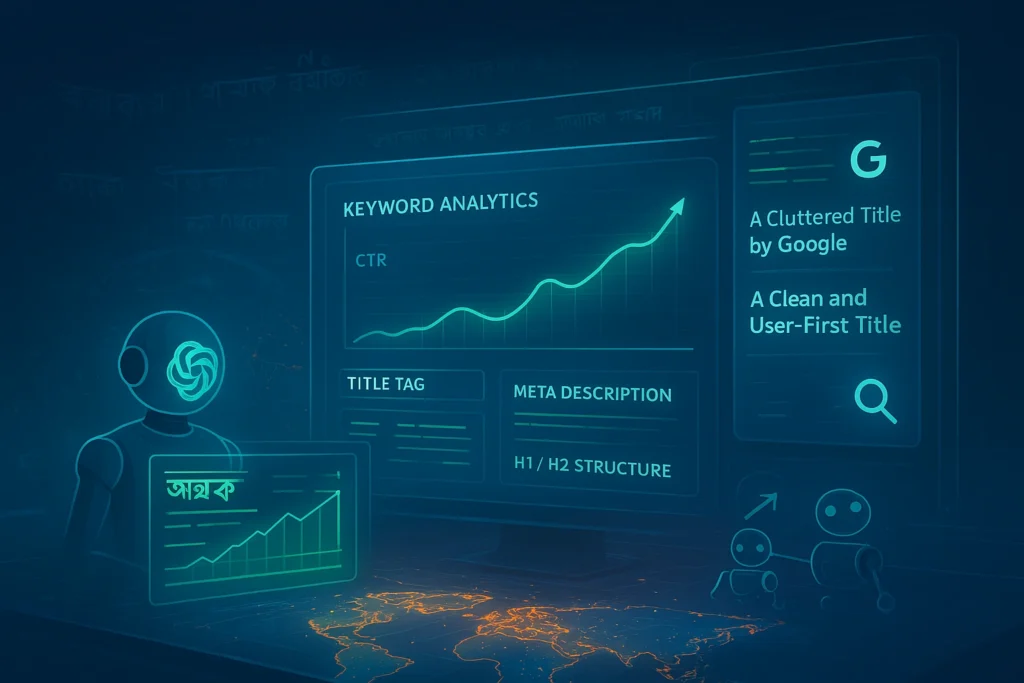
Recent success stories from 2025 prove these strategies deliver. Take Tanveer Evan Rahat’s Bangladesh-focused SEO case studies, where a SaaS company saw its keyword rankings rise 35% in just one month through targeted on-page tweaks. Then there’s Victorious, whose global e-commerce campaigns continue breaking records. These examples demonstrate how abstract advice transforms into measurable wins, especially for local businesses.
Let’s walk through a practical example, review a simple checklist you can use today, and discuss why professional support often makes the difference between good results and exceptional ones.
Your Keyword Placement Checklist
Ready to put this into action? This practical guide pulls from the high-impact zones we covered earlier, updated with 2025 best practices from Backlinko’s on-page optimization framework:
Title Tag: Lead with your primary keyword and keep it under 60 characters. Example: “Keyword Placement Guide for 2025 SEO Success.”

Meta Description: Position your keyword early, aim for 150 characters, highlight clear benefits, and include a compelling call-to-action. Track your click-through rate in Google Search Console to measure improvement.
H1 Tag: Mirror your title tag with a fresh twist. Use only one H1 per page and make sure it contains your primary keyword.
Subheadings (H2/H3): Sprinkle related keyword variations throughout to organize your content logically, like “Why Keyword Placement in Headings Matters Now.”
First 100 Words: Work your keyword naturally into your opening paragraph to immediately establish relevance and reduce bounce rates.
Image Alt Text and File Names: Describe images with keyword-rich names, such as “keyword-placement-infographic.jpg” with alt= “SEO keyword placement tips 2025.”
URL Slug: Keep it clean and keyword-focused, like /keyword-placement-secrets.
Apply this checklist to one page each week, and you’ll start seeing measurable progress.
The Power of a Professional Touch
This checklist gives you a solid foundation, but sustaining long-term success requires more than ticking boxes. That’s precisely where professional on-page SEO services become invaluable.
Expert teams audit your entire site, identify untapped opportunities, and develop customized strategies tailored to your specific needs. Whether you’re optimizing for bilingual searches in Bangladesh or targeting international markets, professionals bring the experience that produces real results—like those 35% ranking improvements achieved within weeks.
Professional SEO doesn’t just make your keywords visible. It transforms them into a competitive edge that consistently drives traffic, engagement, and conversions.
What is keyword placement, and why does it matter for SEO?
Keyword placement refers to strategically positioning relevant search terms (keywords) in your content, titles, and other page elements to help search engines understand and rank your page. It matters because it improves visibility in search results without relying solely on keyword density—Google prioritizes natural, user-focused placement over stuffing. For more, check Moz’s guide on keywords (moz.com/learn/seo/what-are-keywords).
Where are the best places to put keywords on a website or blog post?
Key spots include the title tag, URL slug, meta description, headings (H1, H2), the first 100-200 words of content, image alt tags, and, naturally, within the body text. Avoid over-repetition to prevent penalties. Resources like B2B Digital Marketers (b2bdigitalmarketers.com/blog/keyword-placement) and Pure SEO (pureseo.com/blog/seo/keyword-placement) provide detailed checklists.
How do I avoid keyword stuffing while placing keywords effectively?
Use keywords naturally, aiming for a 1-2% density, and incorporate related terms (semantic keywords) to add context. Focus on user intent rather than repetition—tools like Semrush or Ahrefs can help check for over-optimization. See Digital Web Solutions’ guide (digitalwebsolutions.com/blog/how-to-use-keywords-in-your-content/) for strategies.
Does keyword placement in headings and subheadings really improve rankings?
Yes, placing keywords in H1/H2 tags signals topic relevance to search engines, but it should feel organic. It improves readability and can boost rankings when combined with high-quality content. Alooba’s skill guide (alooba.com/skills/concepts/on-page-seo-406/keyword-placement/) explains this as a core on-page SEO tactic.
How should I place keywords in images and alt text for better SEO?
Include descriptive keywords in image file names (e.g., “best-seo-tips.jpg”) and alt tags (e.g., alt= “best SEO tips for keyword placement”). This aids accessibility and image search rankings. MedResponsive’s blog (medresponsive.com/blog/how-keyword-placement-significant-content-writing/) covers this in detail.
What’s the difference between primary and long-tail keywords in placement?
Primary keywords are short and competitive (e.g., “keyword placement”); place them in high-impact areas, such as titles. Long-tail keywords are longer phrases (e.g., “best places for keyword placement in SEO”); use them in body content for specificity and easier ranking. Ranky’s guide (ranky.co/growth-hacking-and-inbound-marketing-blog/mastering-keyword-placement) offers examples.
How can I track if my keyword placement is working?
Use tools like Google Analytics, Semrush, or Ahrefs to monitor rankings, traffic, and click-through rates for targeted keywords. Look for improvements after updates. Cyrus Shepard’s keyword guide (shared on X) recommends tracking as part of a broader strategy.
Turn Your Keywords into Customers
Wrapping it up, strategic keyword placement isn’t some tedious tech task—it’s the core of a people-first content approach that aligns your site with what users truly seek, fueling genuine business growth. As 2025’s SEO landscape evolves with AI and intent-driven algorithms, fresh insights from Ahrefs and Search Engine Journal show that well-placed keywords can boost organic traffic by 30-50% and conversions even higher, turning casual visitors into loyal customers. Whether you’re a Dhaka startup or a global brand, this foundation delivers lasting results without the guesswork.
Mastering keyword placement turns your website into a powerful magnet for qualified traffic. If you’re ready to see how a professional SEO strategy can transform your business, contact the experts at SEO Services BD today.

